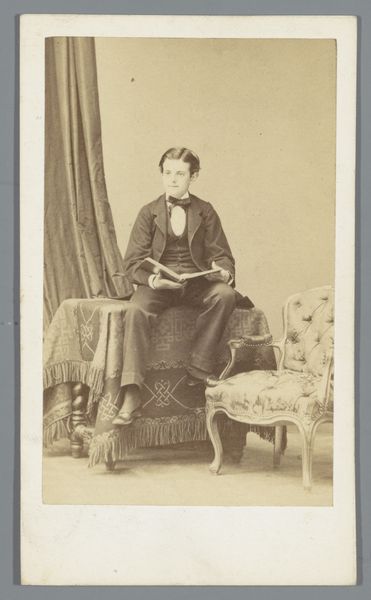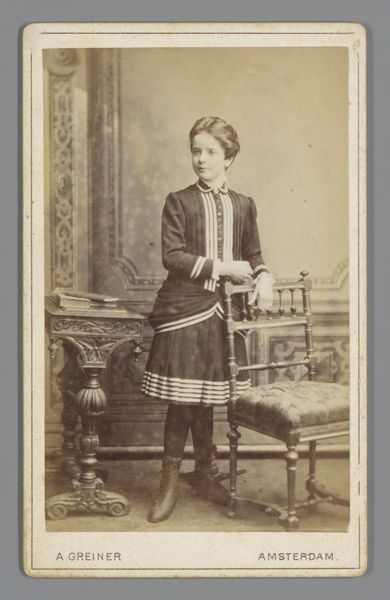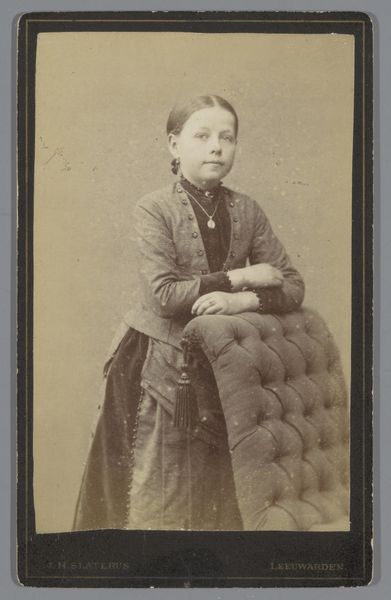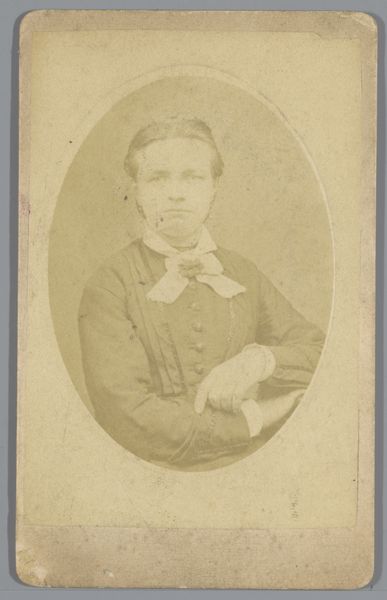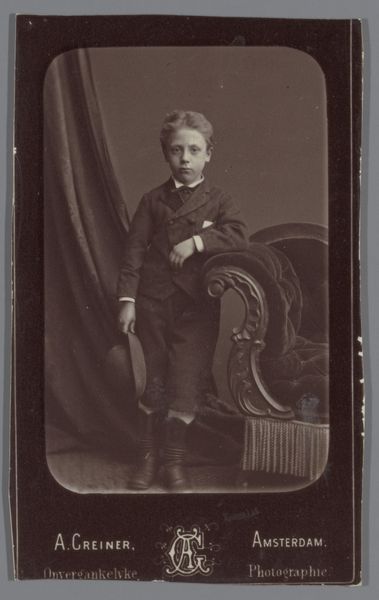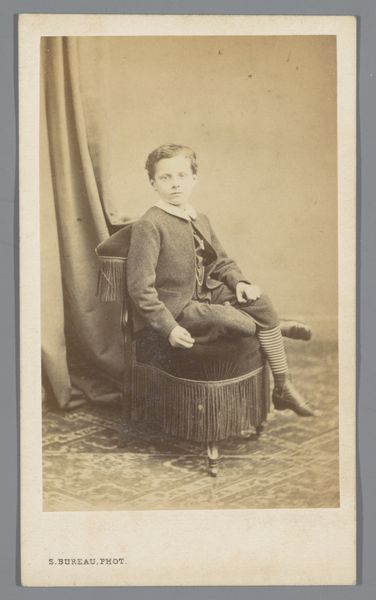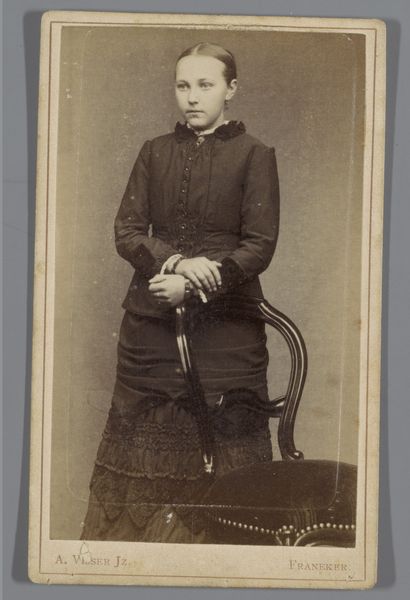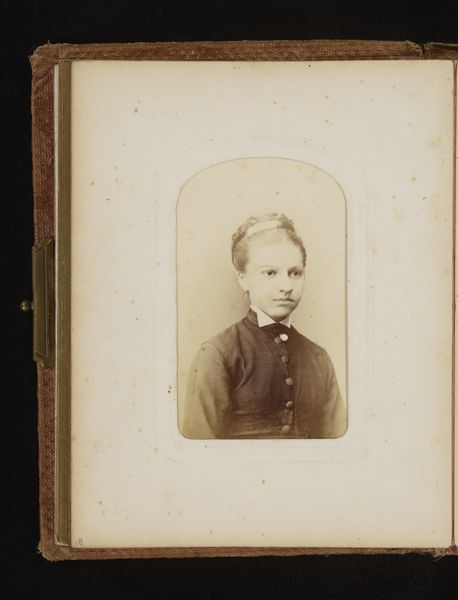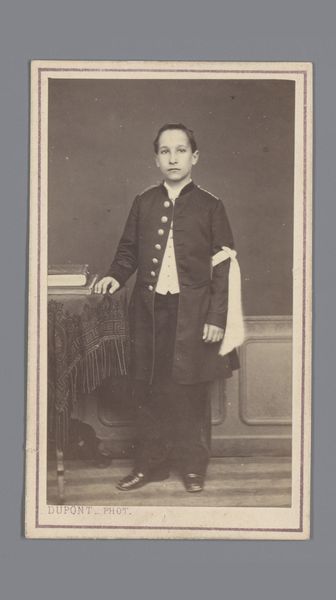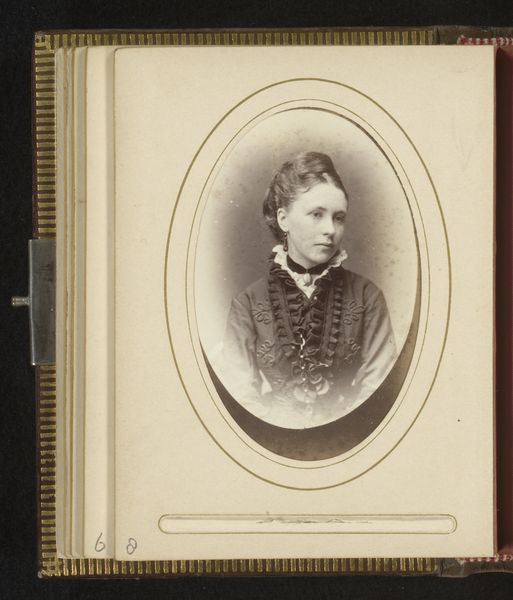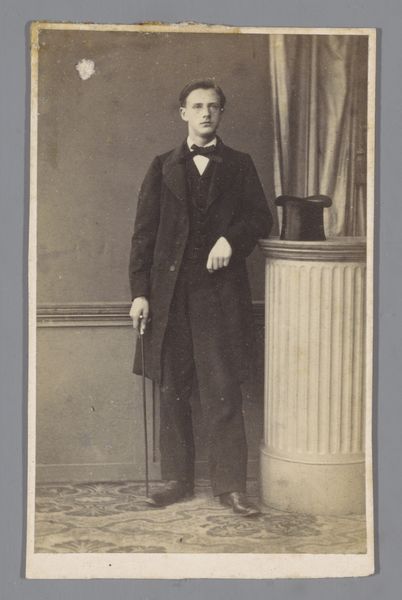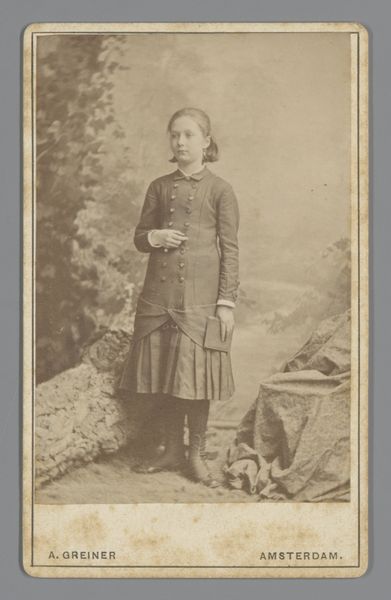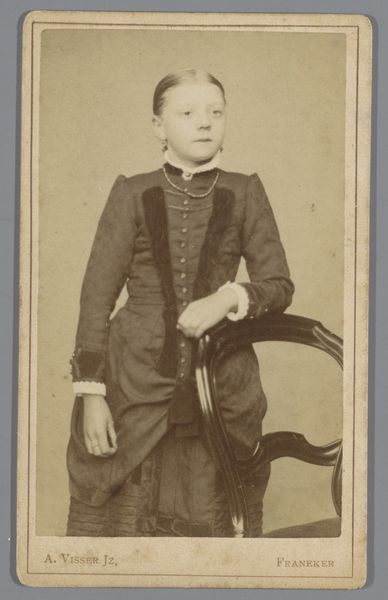
Portret van een onbekende jongen, staande naast een tafel 1857
0:00
0:00
Dimensions: height 106 mm, width 64 mm
Copyright: Rijks Museum: Open Domain
Curator: I’m immediately struck by the gravity in this boy’s gaze, a hint of melancholy perhaps? Editor: Yes, there’s something haunting about this gelatin-silver print by Franz Wilhelm Deutmann, titled “Portret van een onbekende jongen, staande naast een tafel,” created around 1857. What I see is the rigid formality expected of young men at the time. It's currently held at the Rijksmuseum. Curator: Ah, rigid is a great word. It reminds me of being forced into itchy wool suits as a child. The ornate table juxtaposed with the boy’s youthful, almost vulnerable expression tells such a story. What do you think about how photography can immortalize youth? Editor: Absolutely. I'd add that photography in the mid-19th century was very different from today’s accessibility. So it meant that this image probably served a larger function as documentation and status, rather than simple memory-making. And it reflects on social constructs that governed identity. Notice the almost feminine bow at his neck and the softness of his complexion contrasted against the austere setting. Curator: Right, photography froze moments. Think of all the moments never captured! The way he is casually leaning; there’s also defiance lurking there. Editor: That defiance reads as anxiety, a struggle within the imposed societal norms that often stifle the expression and true identity of children even today. In particular the historical implications around this boy are hard to separate from the legacies of class, access, and power. Curator: Well, the magic is in seeing the nuances that still speak across time and remind us how art offers mirrors reflecting how the human spirit wrestles and perhaps triumphs to make way for the dreams to come true! Editor: Absolutely, It reminds us that the visual can be deeply intertwined with politics of the period, revealing unspoken truths if we're willing to engage critically with the work.
Comments
No comments
Be the first to comment and join the conversation on the ultimate creative platform.
